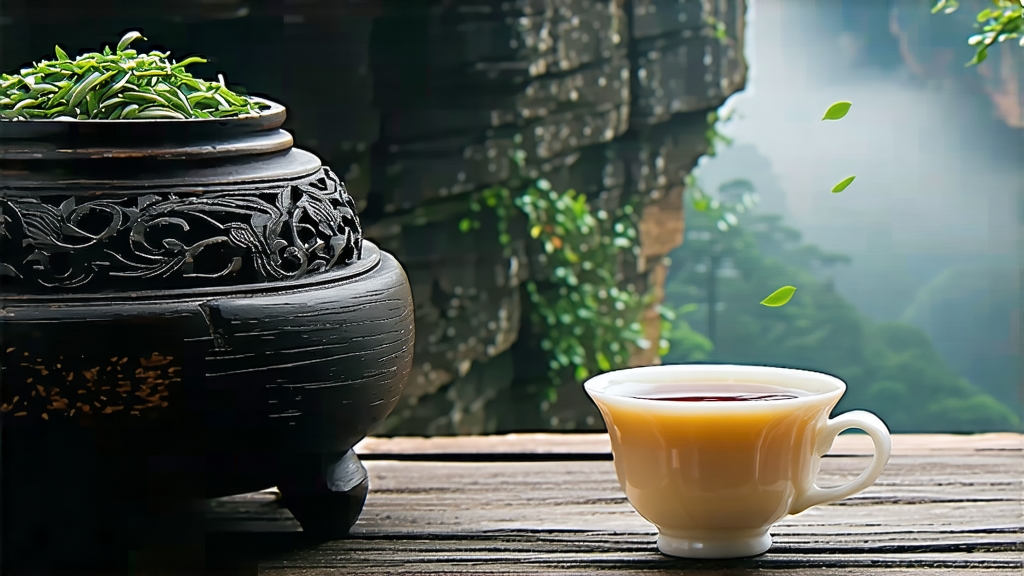
Long before Assam, Ceylon, or Earl Grey entered the global lexicon, a small village in the Wuyi Mountains of China’s Fujian province produced the very first fully oxidised leaf that Europe would later label “black tea.” Locals still call it zhengshan xiaozhong—“small-leaf from the original mountain”—but the outside world knows it as Lapsang Souchong. To understand this tea is to hold a compass pointing toward the birth-coordinates of all red teas; every keemun, every ceylon, every malty breakfast blend can trace its conceptual lineage to the smoke-wreathed barns of Tongmu village in the early seventeenth century.
History: From Ming Outlaws to London Drawing Rooms
Legend places the origin in 1646, when Qing troops pressed southward through Fujian. Retreating Ming soldiers, quartered among tea farmers, demanded that leaf be readied for transport before dawn. To accelerate drying, the villagers dried the tea over green pine fires. The accidental smoke infusion darkened the leaf and imparted an arresting resinous sweetness. By the time Dutch traders carried the first chests to Amsterdam in 1604, European tastemakers had already begun sweetening the liquor with sugar and milk, habits that would reshape morning rituals across two continents. The East India Company listed the tea as “Bohea” (a corruption of “Wuyi”), and by 1800 Lapsang Souchong fetched three times the price of green tea at London auction. Charles II’s Portuguese queen, Catherine of Braganza, made it fashionable at court, sealing its reputation as the aristocrat’s cup.
Terroir: Why Only Tongmu Can Birth True Zhengshan
The Wuyi range is a UNESCO dual heritage site where 600-million-year-old granite cliffs funnel moist, subtropical air into a perpetual cloud sea. Day-night temperature differentials of 15 °C slow the growth of the indigenous Xingcun Xiaoye cultivar, concentrating amino acids and volatile aromatics. Soils are lateritic, rich in iron and quartz, and drain rapidly on 45-degree slopes. Crucially, the Chinese government has designated Tongmu village and a 53 km² buffer zone as the only legally protected origin for authentic Lapsang Souchong; leaves picked outside this micro-basin must be marketed simply as “smoked black tea,” a distinction akin to Champagne versus sparkling wine.
Leaf Grades: A Fractal Spectrum of Smoke and Sweetness
Although Western vendors often sell one generic “Lapsang,” connoisseurs recognise at least four grades. Wuyi Zhengshan Xiaozhang—picked before Qingming festival from 300-year-old bushes—offers cocoa-like notes and only a whisper of smoke. Chiye (coarse-leaf) grade, harvested in late May, carries a more pronounced tarry edge and is the base for Russian Caravan blends. A newer, unsmoked style called “Zhengshan Xiaozhong Wild” is withered over charcoal embers instead of pine, yielding a honeyed cup that converts even smoke-averse drinkers. Finally, the export-grade “Tarry Lapsang” is re-smoked after firing to satisfy Scandinavian and North-American palates that crave campfire intensity.
Craft: The Eight Stages That Trap a Forest Inside a Leaf
- Plucking: One bud plus two leaves, 5 a.m.–9 a.m., while dew still glistens.
- Withering: Leaves are laid on bamboo screens suspended above pinewood embers for 8–10 hours; moisture drops from 75 % to 45 % and the first light smoke kiss is absorbed.
- Rolling: Traditionally by hand in 3 kg batches; modern facilities use shallow-depth machines that mimic fingertip pressure without breaking cell walls excessively.
- Oxidation: The leaf piles rest in pine-wood trays for 4–5 hours at 24 °C and 85 % humidity. Catechins convert to theaflavins, turning leaf colour from jade to copper.
- Primary Firing: A 220 °C, 7-minute pass through a charcoal-heated wok arrests oxidation and sets the chocolate base notes.
- Smoking: The pivotal step. Fresh pinewood is lit, then smothered to create cool, aromatic smoke (35–40 °C) that circulates beneath